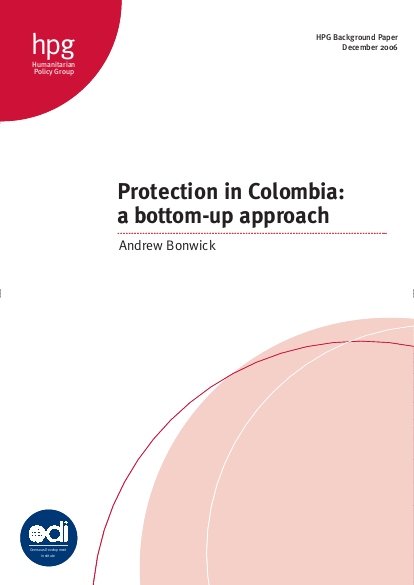
‘If they want to kill someone, they will.’ This disheartening verdict on years of hard work to improve the protection of civilians in Colombia was often repeated during the course of this study. ‘Protection’ in Colombia’s complex conflict is understood in terms of basic physical security. The agenda is highly politicised, and as a result issues that are less politically interesting, notably sexual violence and the impact of coca fumigation, seem not to get the attention that they warrant. Antagonism between the government and NGOs has left the latter with almost no influence on the national stage. Humanitarian actors are also largely powerless when protection needs clash with the economic, political or military interests of an armed actor. International pressure, in particular from the United States, which provided $800 million of mainly military support to Colombia in 2006, has been instrumental in the creation of a public policy which, on the surface, respects human rights, but which in practice remains largely unimplemented in the areas where protection is most needed.
This case study of protection in practice in Colombia is one of three commissioned by the Overseas Development Institute to gather experiences of protection from different contexts, to feed into a wider analysis of the essential elements of effective interventions. Fieldwork was carried out in Bogota´, Uraba´ and Cauca in July and August 2006. Over 60 people from the Colombian government, mandated agencies, international and national NGOs, community organisations and the Catholic Church, as well as individuals affected by the conflict, were interviewed.
